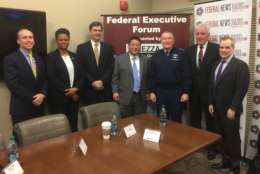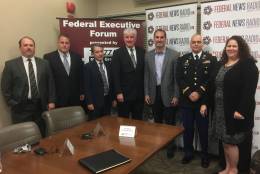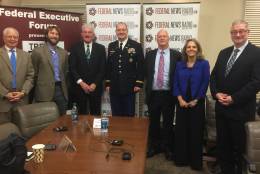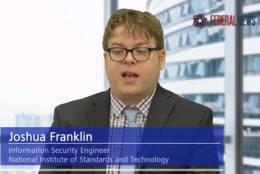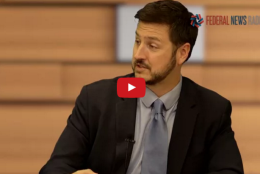Roundtables
-
This program will provide a progress report on Cybersecurity/Defense & Homeland in government.
February 28, 2017 -
The world is full of risks. Federal agencies no less than commercial organizations, operating as they are in a complex and increasingly threatening world, face risks to their finances, their physical security, and their ability to do business thanks to vulnerabilities in their information technology systems.
February 16, 2017 -
Hear 11 top government thought leaders and visionaries discuss how they have used technology to accomplish mission needs and programs.
December 13, 2016 Federal News Radio convened a panel with a diverse group of cybersecurity professionals to talk about best practices for gathering threat intelligence for today’s cybersecurity in government.
November 28, 2016As far back as 2007, it became common place for federal agencies and industry partners to talk about the need to better align data to improve the effectiveness and efficiency of the government.
November 15, 2016-
This program will provide a progress report on Defense Cloud Computing in government.
November 15, 2016 -
This program will provide a progress report on Identity & Access Management in government.
October 25, 2016 Innovation and cybersecurity are in a head-on collision in the federal government. The growing use of connected devices under the moniker Internet of Things (IoT), the move to the cloud and what seems to be the ever growing expansion of mobile devices is causing government and industry alike to rethink how to be cyber secure, while also not stifling innovation at the same time.
October 24, 2016-
There’s no doubt about it – the federal government has gone mobile. Driven by both policy and the compelling nature of mobile computing, smartphones and tablets have become daily tools at all levels of government. No longer just for email and phone calls, in the hands of line and management employees, mobile devices also carry enterprise applications and collaboration tools.
October 11, 2016 In late 2016 every eye in the political community is on the presidential change. A similar change will take place in the Pentagon – a massive upgrade of Microsoft Windows machines. Department of Defense Chief Information Officer Terry Halvorsen has mandated that four million computers be upgraded to Windows 10.
October 05, 2016-
Derived Credentials have become an essential way for public sector agencies to leverage their investment in smart card based authentication and bring this capability to the mobile platform in a way that makes sense. As mobility heats up all over the federal workspace it’s important that a high level of security not be sacrificed. In support of this important effort, download our Mobileiron and Entrust Solution Brief to learn how we have worked together to provide an elegant, out of the box solution to solve this critical capability requirement, This solution makes it so any government organization can use their agency issued smart card to create a mobile credential to access important agency services like email, sharepoint & websites/microsites that require PIV card to access
October 03, 2016 The federal government has bought into cloud computing without a doubt. In a short seven years since the Obama administration’s cloud first policy, many agencies have quickly move past crawl to the walk stage and are ready to start running in the cloud.
September 22, 2016The federal government has been on a drive to economize on energy since Middle East oil embargoes of the 1970s. In more recent times, policies to reduce greenhouse gas emissions from the government’s buildings and vehicles have joined efforts to reduce spending on fuel.
For the armed services, more efficient use of fuel and greater energy self-sufficiency are matters of readiness, agility and, ultimately, the ability to prevail in war. That’s why military leaders are undertaking a broad range of energy efficiency efforts encompassing installations, ground vehicles, ships and planes.September 20, 2016-
Four leading government marketing pros offer tips and insights on how to strengthen your government marketing efforts. Topics include events, budgets, brand vs. lead gen, GAIN 2016, mentoring, and more.
August 16, 2016 Over the past 20 years, some would say the specific approach to cybersecurity taken by the government and industry has been shortsighted. The defense-in-depth approach is broken, according to some experts. They say it creates a false sense of security. It depends on too many point solutions at different layers of the network. In the end, it creates gaps and that is where hackers hide and eventually breach the network and take the data.
August 15, 2016

